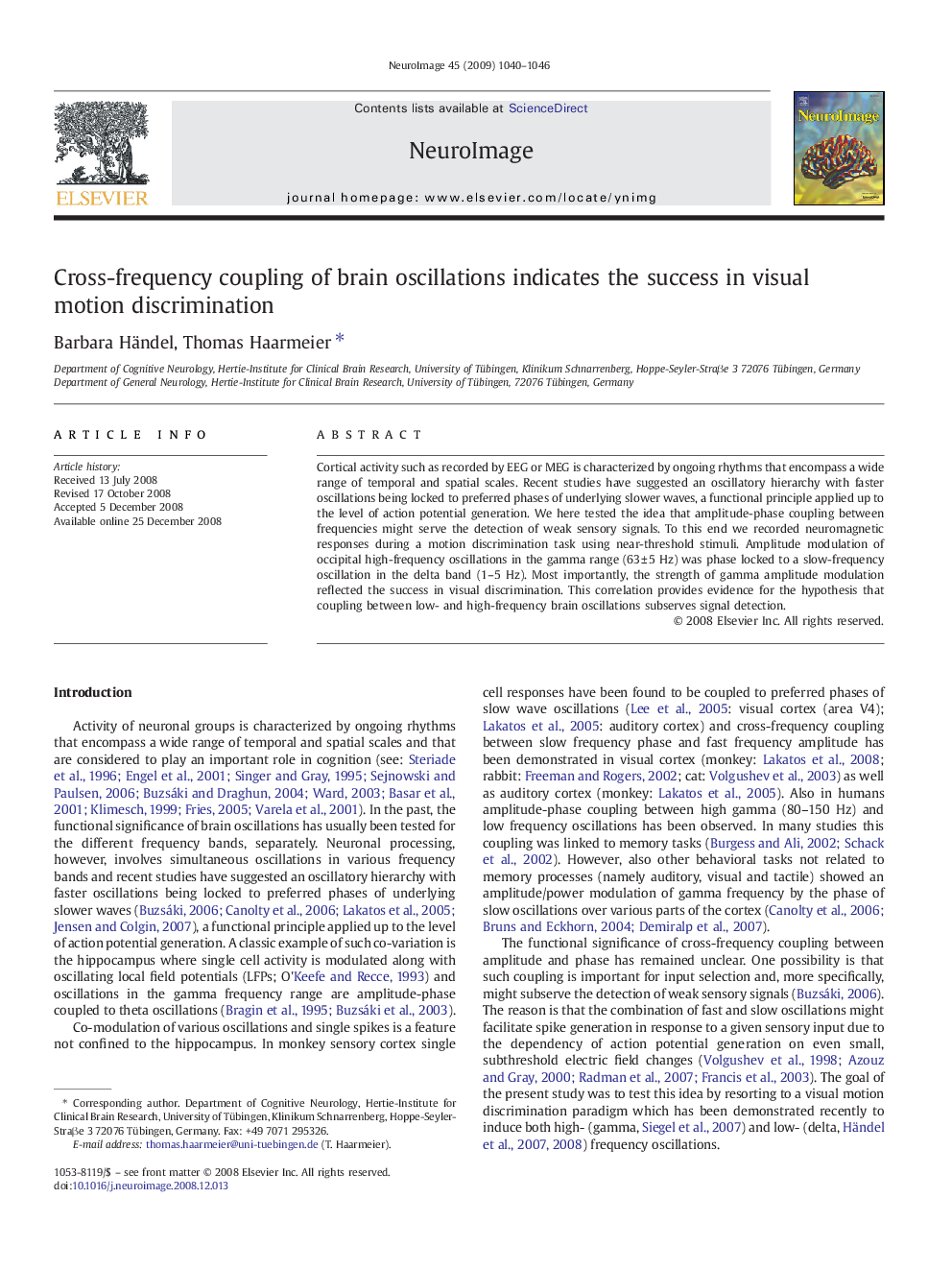| کد مقاله | کد نشریه | سال انتشار | مقاله انگلیسی | نسخه تمام متن |
|---|---|---|---|---|
| 6039212 | 1188814 | 2009 | 7 صفحه PDF | دانلود رایگان |
عنوان انگلیسی مقاله ISI
Cross-frequency coupling of brain oscillations indicates the success in visual motion discrimination
دانلود مقاله + سفارش ترجمه
دانلود مقاله ISI انگلیسی
رایگان برای ایرانیان
موضوعات مرتبط
علوم زیستی و بیوفناوری
علم عصب شناسی
علوم اعصاب شناختی
پیش نمایش صفحه اول مقاله

چکیده انگلیسی
Cortical activity such as recorded by EEG or MEG is characterized by ongoing rhythms that encompass a wide range of temporal and spatial scales. Recent studies have suggested an oscillatory hierarchy with faster oscillations being locked to preferred phases of underlying slower waves, a functional principle applied up to the level of action potential generation. We here tested the idea that amplitude-phase coupling between frequencies might serve the detection of weak sensory signals. To this end we recorded neuromagnetic responses during a motion discrimination task using near-threshold stimuli. Amplitude modulation of occipital high-frequency oscillations in the gamma range (63 ± 5 Hz) was phase locked to a slow-frequency oscillation in the delta band (1-5 Hz). Most importantly, the strength of gamma amplitude modulation reflected the success in visual discrimination. This correlation provides evidence for the hypothesis that coupling between low- and high-frequency brain oscillations subserves signal detection.
ناشر
Database: Elsevier - ScienceDirect (ساینس دایرکت)
Journal: NeuroImage - Volume 45, Issue 3, 15 April 2009, Pages 1040-1046
Journal: NeuroImage - Volume 45, Issue 3, 15 April 2009, Pages 1040-1046
نویسندگان
Barbara Händel, Thomas Haarmeier,